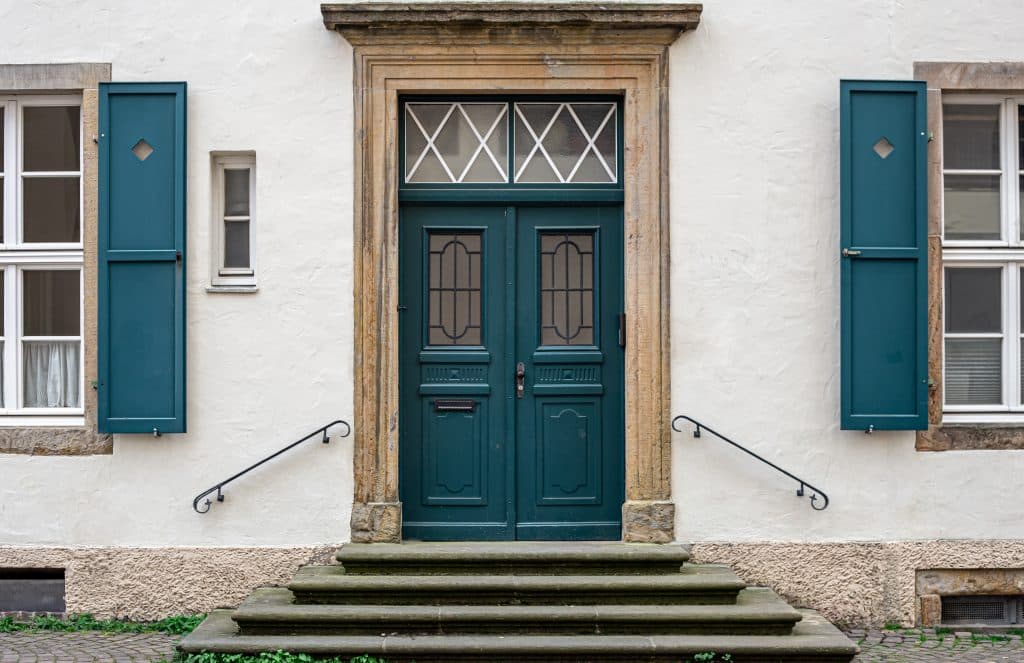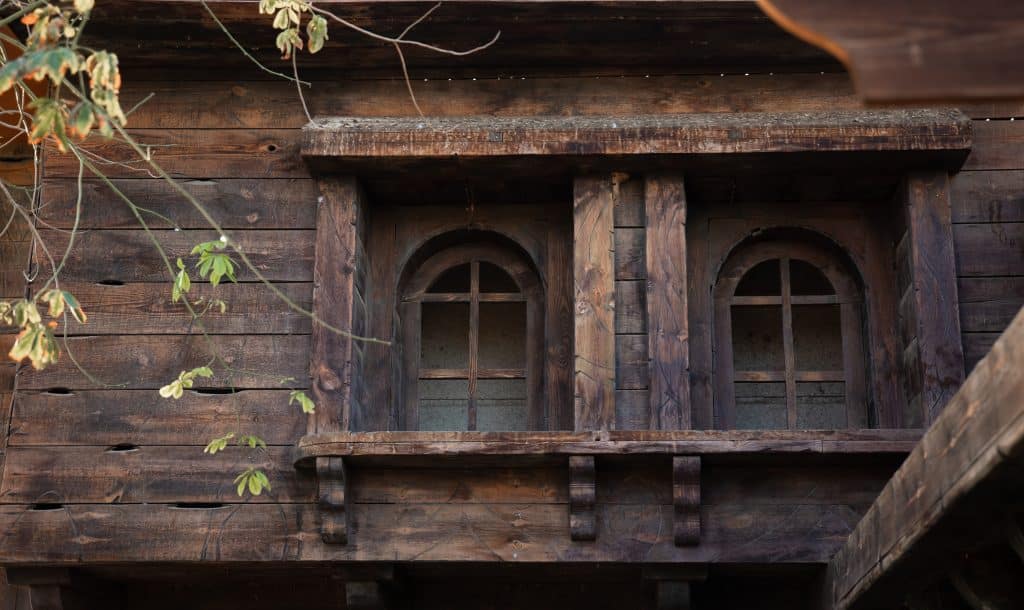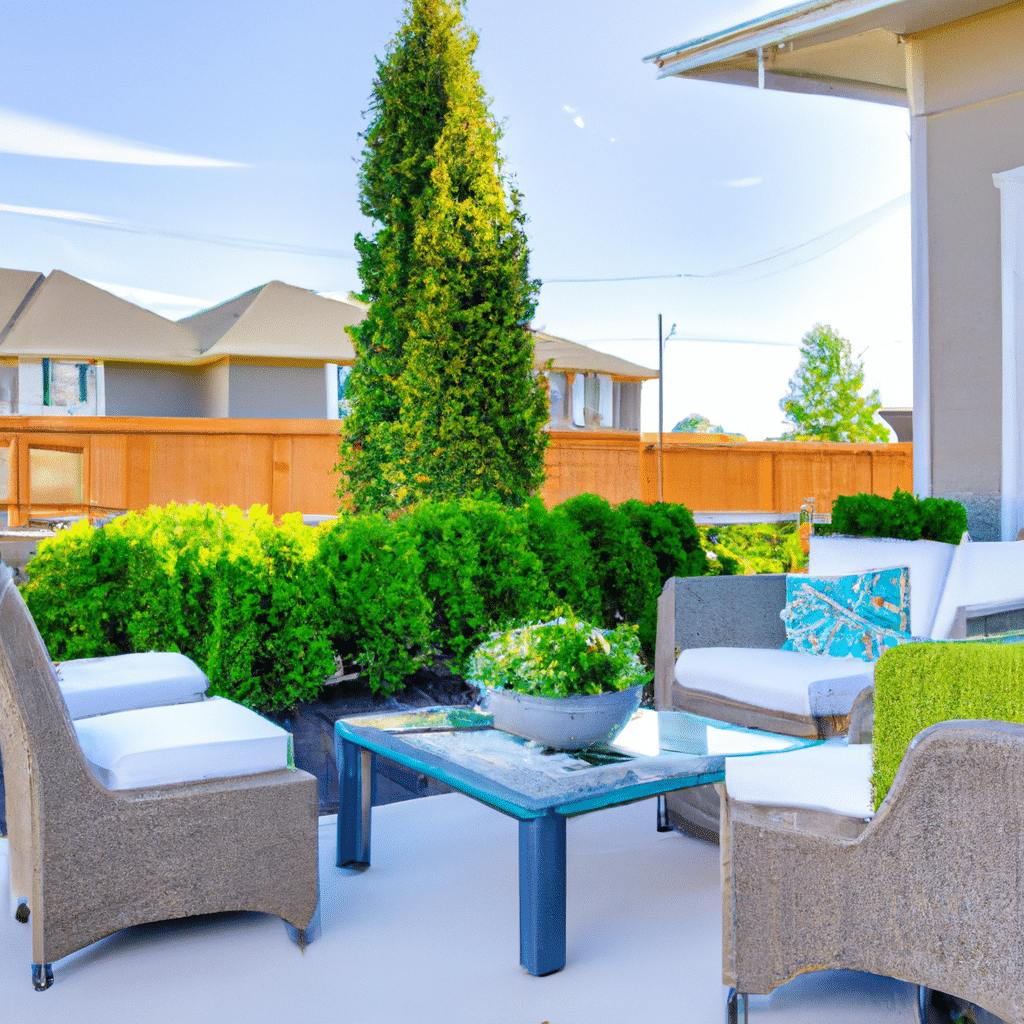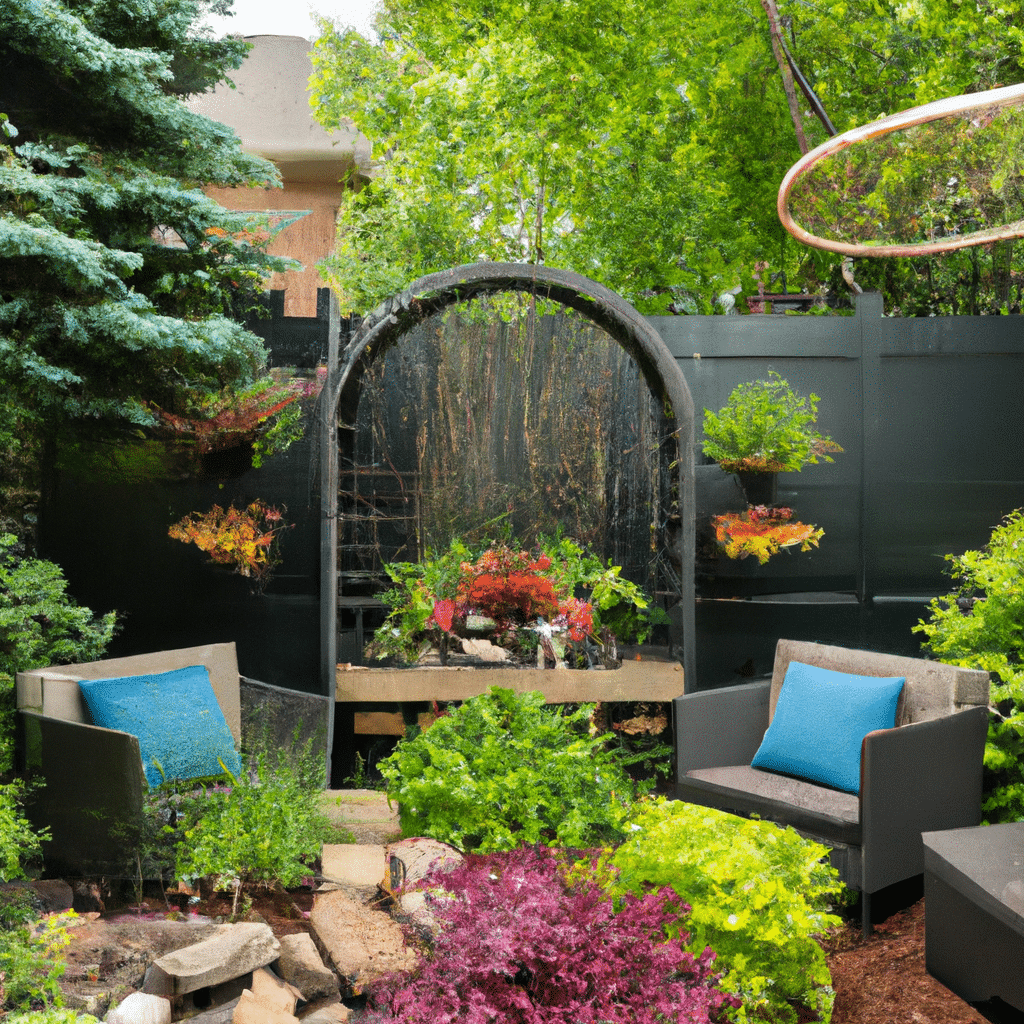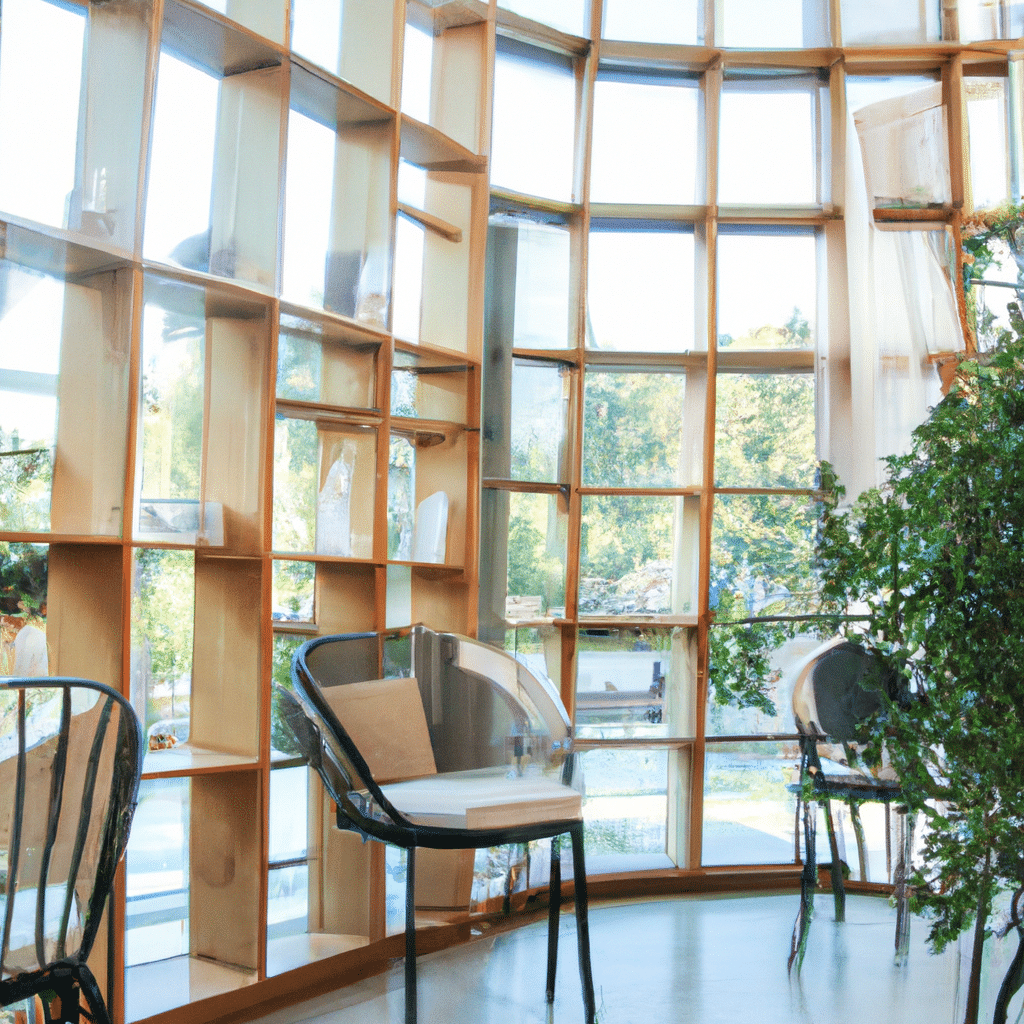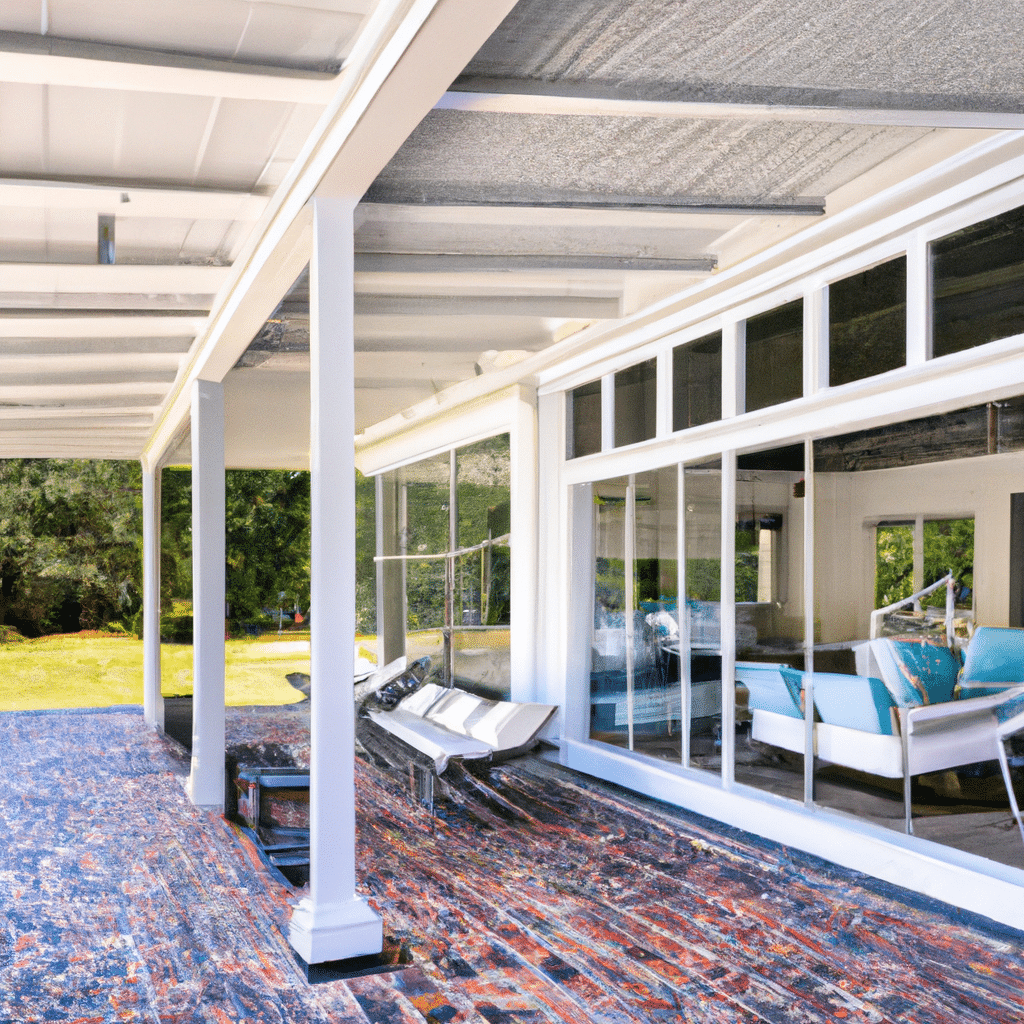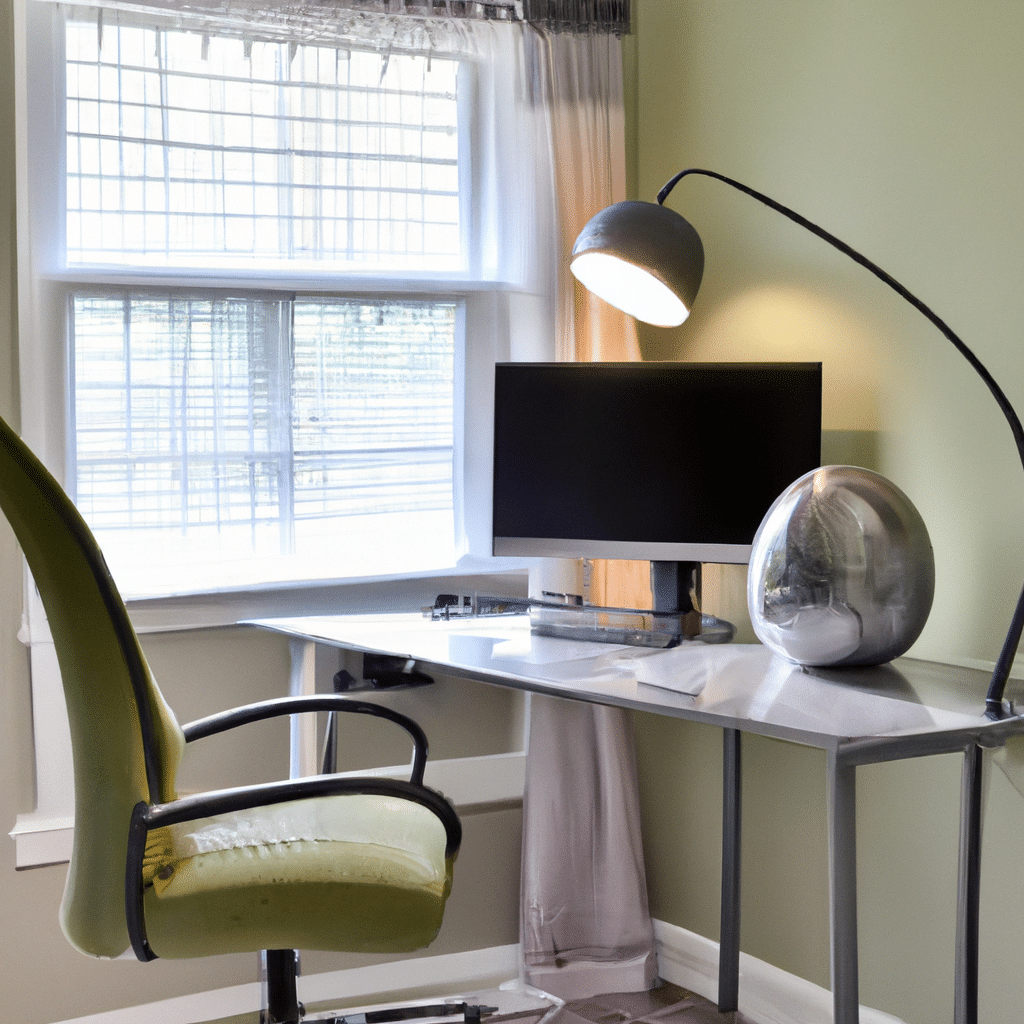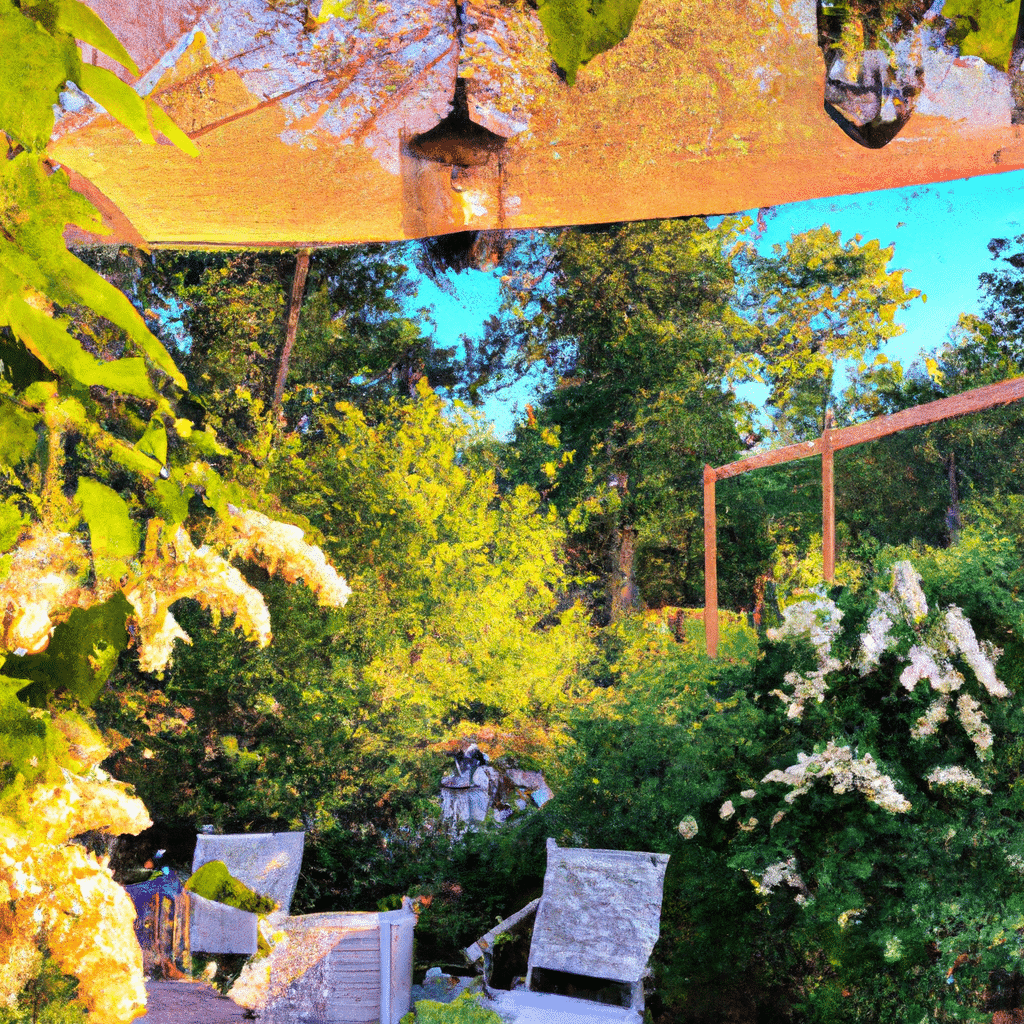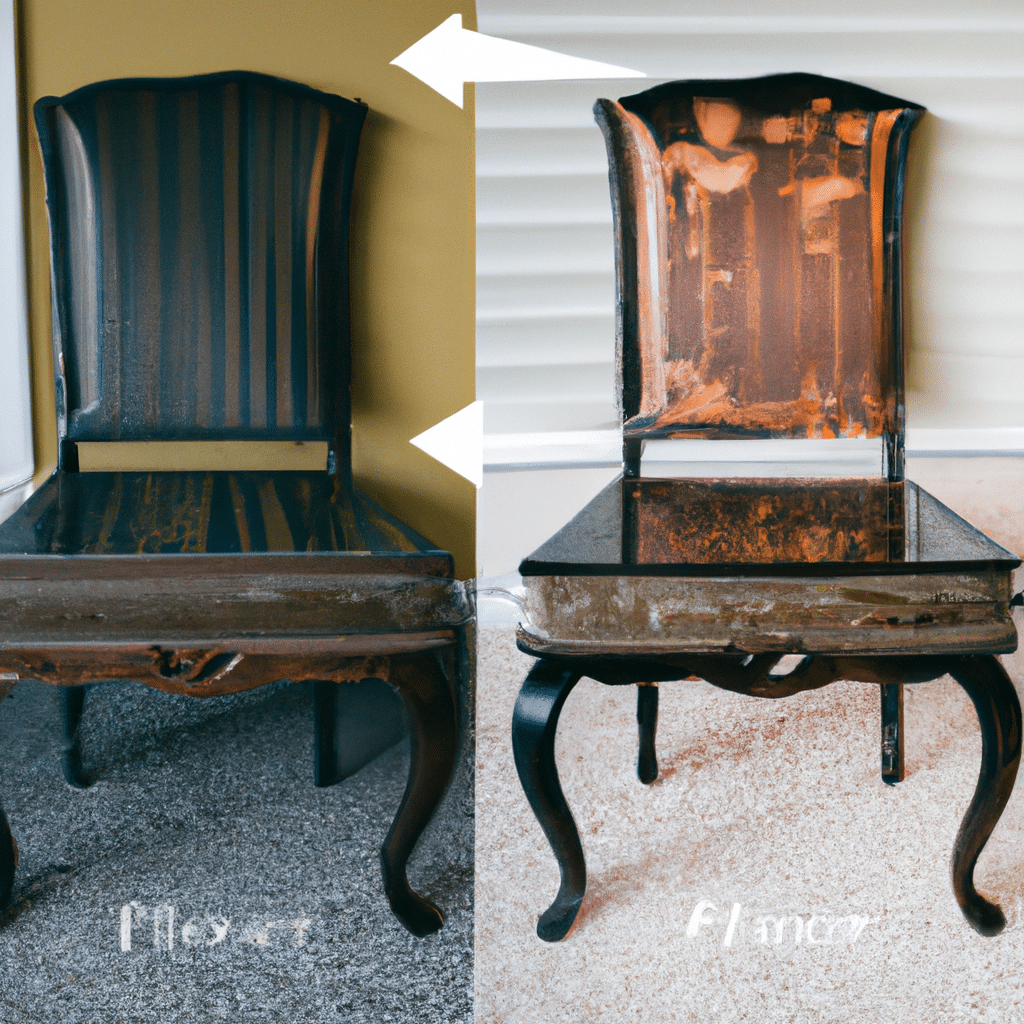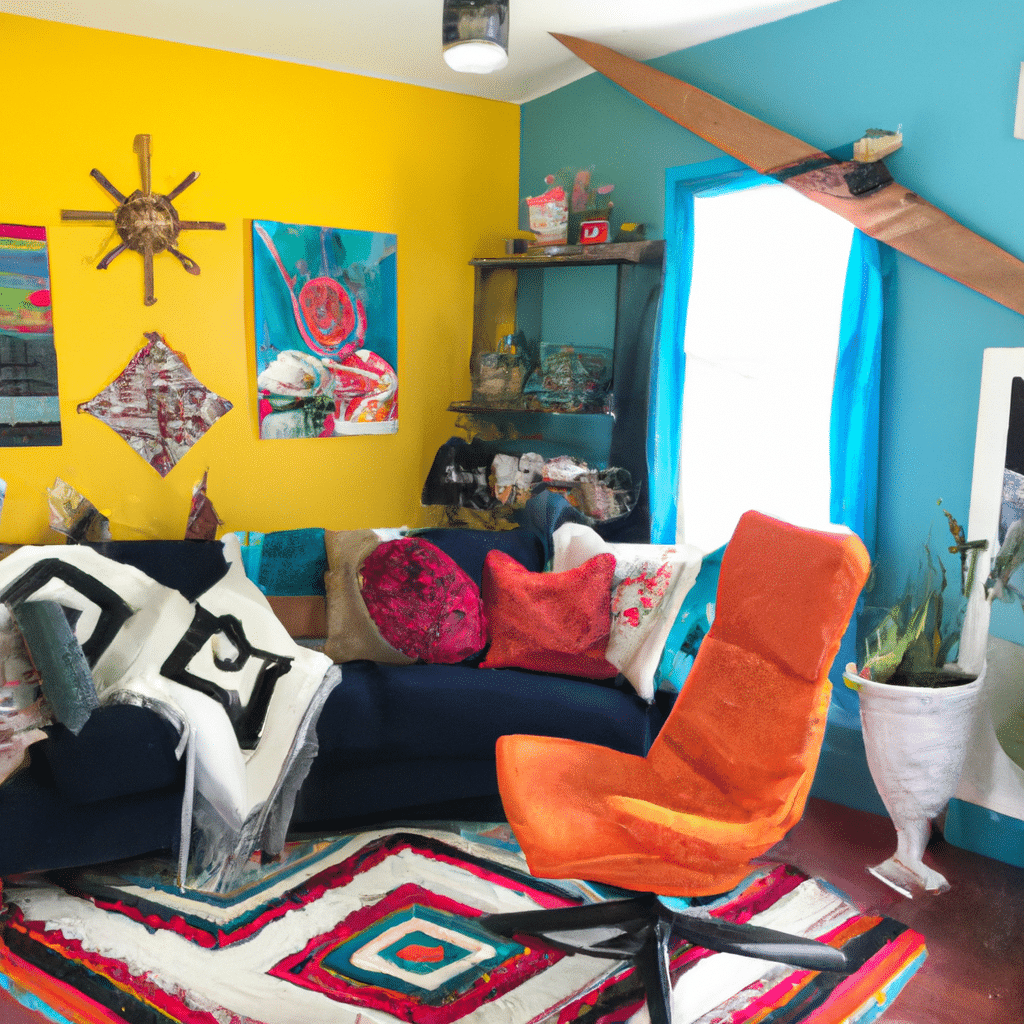The Charm of Vintage Interiors
There’s something special about walking into a home that has withstood the test of time. From charming bungalows to stately Victorians, vintage houses offer a glimpse into the architecture and design of days past. Rich hardwood floors, intricate moldings, and unique architectural details immediately transport you back in time.
Vintage homes conjure up nostalgia and remind us of forgotten craftsmanship. But behind their undeniable charm, these historic houses also come with their fair share of challenges. From drafty windows to faulty plumbing, owning a vintage home often requires some modernization to make it liveable by today’s standards.
The key lies in finding the right balance between preserving the home’s authentic character and integrating solutions suited for contemporary living. In this comprehensive guide, we’ll explore the fundamentals of enhancing vintage interiors with modern amenities. Follow along as we uncover everything you need to know to revive the historic home of your dreams.
The Timeless Appeal of Historic Homes
What is it about vintage homes that makes them so alluring? Historic houses take us back to simpler times and remind us of enduring values like craftsmanship, quality materials, and attention to detail.
Beyond pure nostalgia, there are several distinguishing traits that contribute to the popularity of vintage homes:
- Unique Architecture: Historic architectural styles like Craftsman, Victorian, Tudor, and Colonial Revival offer character you simply can’t find in modern cookie-cutter developments. Distinctive design features like bay windows, crown moldings, and hardwood floors add to their charm.
- Quality Construction: Traditionally built with solid wood framing, plaster walls, and old-growth timber, vintage homes were meant to last. These durable structures have survived for generations.
- Sense of History: There’s something profound about living in a home with historical significance. Knowing your walls have witnessed generations adds a special meaning.
- Strong Community Ties: Vintage neighborhoods foster a sense of community. Long-time residents pass down history and traditions.
- Investment Potential: As a scarce and highly sought-after commodity, vintage homes in desired areas often appreciate value and make solid real estate investments.
Owning a piece of history is a special privilege. While modern homes have their advantages, historic houses offer an authenticity and heirloom quality that new construction simply can’t replicate.
Common Challenges in Vintage Spaces
Of course, along with their age and charm, vintage homes come with a unique set of challenges unknown in contemporary spaces. Homes constructed 80, 100, or 150 years ago simply weren’t designed with modern technologies and amenities in mind.
Some of the most common issues faced in older homes include:
- Moisture management: Historic homes were built with materials and methods that make them prone to excess moisture leading to mold, mildew, and wood rot.
- Poor insulation: Without modern vapor barriers and insulation, antique homes often suffer from drafts, inadequate temperature control, and high energy bills.
- Faulty wiring: Outdated electrical systems pose safety issues and often can’t handle the demands of today’s appliances and devices.
- Antiquated plumbing: From galvanized steel pipes to lead drain lines, aging plumbing systems frequently leak, clog, and put undue strain on water pressure.
- Structural flaws: Over the years, compromised foundations, aged roofs, and outdated load-bearing methods can undermine the home’s structural integrity.
- Not up to code: Vintage homes rarely meet modern building code requirements for fire safety, occupancy limits, energy efficiency, and more.
- Challenging repairs: Finding replacement parts for obsolete heating systems or matching heritage woods for repairs can be difficult and costly.
- Inadequate storage: Without modern closet systems and storage solutions, organizing a vintage home while preserving its character can be tricky.
When armed with the right solutions and proper care however, these challenges are far from insurmountable. With creativity and commitment, you can have the best of both eras.
The Importance of Preserving Authenticity
When upgrading and modernizing a vintage home, it’s essential to preserve the integrity of the original architecture and design. After all, fixing structural flaws and replacing faulty plumbing is very different from gutting historical details that give the home its heart and soul.
Here are some key principles to keep in mind:
- Evaluate any proposed changes to ensure they are reversible and won’t permanently damage original features.
- Maintain the home’s floor plan and spatial layout if possible, as this defines the inherent character.
- Repair rather than replace architectural details like moldings, ceiling medallions, and hardware when feasible.
- Reuse vintage materials like reclaiming wood floors or salvaging original brickwork.
- Select period-appropriate materials and styles for visible improvements like windows, lighting, and finishes.
- Consult preservation standards for your city and neighborhood to ensure compliance for historic designation.
- Document changes through photos and records to create a renovation journal for future owners.
With careful curation, you can undertake major modern updates while still preserving the vintage details that make your historic home unique. This balanced approach allows for comfortable contemporary living without sacrificing old-world charm.
Modern Solutions for Traditional Homes
Now let’s explore some of the most impactful modernization projects to revive vintage spaces while maintaining their authentic spirit.
Moisture Control in Vintage Interiors
Managing moisture is one of the most pressing concerns in older homes. Without modern vapor barriers and humidity control methods, dampness penetrates walls, ceilings, and floors. In addition to causing mold and mildew, moisture compromises structural integrity as it rots wood and erodes masonry over time.
Understanding the causes of excessive moisture along with smart solutions is key to creating a dry, healthy interior in your vintage home.
Understanding Humidity and Its Effects
Humidity refers to the amount of water vapor suspended in the air. Relative humidity represents the percentage of water vapor present in the air compared to the maximum amount the air can hold at a given temperature.
Ideally, indoor relative humidity should be maintained between 30-50%. But in many older homes, poor insulation and air leakage allow outdoor humidity to raise indoor levels to 60% or above.
Prolonged elevated humidity causes a number of detrimental effects:
- Accelerates growth of mold and mildew
- Warps wooden materials leading to cracks and decay
- Peels away paint and wallpaper
- Corrodes metal fixtures and hardware
- Promotes dust mites, bacteria, and other allergens
- Creates a feeling of discomfort and stuffiness
Controlling moisture through dehumidification and proper ventilation is critical to ensuring the longevity and comfort of your vintage home.
Introducing the Dehumidifier: A Modern Solution
A dehumidifier is a game-changing modern appliance for managing moisture in older homes. Portable or whole-home installed dehumidifiers work by drawing humid air over cooled coils. This causes the moisture to condense and run into a collection tank or drain. The drier air is then released back into the living space.
Benefits of Using a Dehumidifier in Older Homes
- Removes excess humidity and maintains optimal 30-50% relative humidity
- Prevents growth of mold, mildew, and dust mites
- Protects structural integrity by keeping wood dry
- Saves on energy bills by reducing dampness
- Improves air quality by decreasing allergens and musty odor
- Makes interior environment feel fresh and comfortable
Dehumidifiers now come in compact, quiet-running models that blend seamlessly into vintage homes. Look for Energy Star-rated units for the most efficiency. Place portable models in problem rooms like basements or crawlspaces. Opt for whole-home models installed alongside HVAC systems to manage humidity throughout the house.
Selecting the Right Dehumidifier for Your Space
Choosing an appropriately sized system for your home is key to effective moisture removal. Consider these factors:
- Square footage of your home
- Number of occupants
- Severity of humidity levels
- Areas with excessive dampness like basements
- The presence of large moisture generators like pools
- Your local climate and weather patterns
Consult with HVAC professionals to calculate the ideal pint-removal capacity. Select portable units in the 35-50 pint range for smaller spaces or whole-home systems that can extract 70 pints or more per day for larger vintage homes.
Advanced hygrometers that track humidity levels can also help determine the right dehumidifier capacity. This smart home technology alerts you when moisture gets too high.
Installation and Maintenance Tips
- Place portable dehumidifiers in centrally located areas for maximum circulation. Elevate the unit if possible.
- For whole-home systems, install the dehumidifier in tandem with your forced-air HVAC equipment.
- Place units away from walls for proper airflow.
- Empty the reservoir tank frequently to avoid overflow.
- Replace filters per manufacturer recommendations.
- Have a professional annually service the dehumidifier to keep it running efficiently.
With the right dehumidifier in place, you’ll stop moisture in its tracks and breathe new life into your vintage home. Let’s look at a real-world example of dehumidification at work.
Case Study: Reviving a Victorian Home
Jason and Louisa purchased a beautiful 1895 Queen Anne Victorian in upstate New York. But within the first year of moving in, a persistent musty odor surfaced along with visible mold in their basement and attic spaces. A humidity gauge confirmed levels consistently above 60%.
Working with an HVAC specialist, they installed a 70-pint, whole-home dehumidifier integrated with their existing ductwork. Within just a few days, indoor humidity dropped below 50%. Mold remediation was no longer needed. And to the couple’s delight, the stale air smell completely disappeared.
With proactive dehumidification, Jason and Louisa’s Victorian regained its welcoming atmosphere. Their antique home now offered modern healthy air quality while still maintaining its 19th century grandeur.
Flooring Challenges in Vintage Homes
Original wood floors are among the most beloved features in historic homes. But after decades of wear, these floors often end up painfully creaky and warped. Sanding and refinishing can only do so much. At a certain point, the subfloor and floor joists below need reinforcement.
Luckily, modern solutions exist to restore stability and silence to noisy antique floors without compromising their timeworn patina.
Modern Solutions for Creaky Floors
Along with refinishing, two effective approaches can revive aging wood floors:
Sistering floor joists: Adding new boards alongside existing joists provides stability and levels uneven spots. This also allows you to insulate between the joists to improve temperature control.
Stiffening subfloor: Applying thick layers of construction adhesive and plaster to the subfloor creates a robust reinforcement layer between the joists and flooring above.
Both methods can be completed from below so you don’t need to disturb the original flooring. The preparation work is key to ensure maximum bonding.
For seriously compromised floors, selectively replace damaged boards as needed to maintain structural integrity before using these strengthening techniques. With proper restoration, you can enjoy your vintage floors for decades to come. The rhythmic creaks telling tales of the past will become a distant memory.
Lighting in Historic Interiors
From gas lamps to early Edison bulbs, lighting technology has come a long way since the dawn of vintage homes. Upgrading to modern fixtures provides superior illumination while retaining period-appropriate style.
Blending Modern Lighting with Vintage Charm
When replacing lighting, select options that align with the architecture:
- Pendants: Iron or brass pendants work well in kitchens and entryways. Go for Edison-style bulbs.
- Sconces: Look for candle-shaped sconces to flank windows and top staircases.
- Chandeliers: Opt for elegant crystal or lantern-style chandeliers with candles or Edison bulbs to define dining areas.
- Recessed: Trimless LED recessed lights provide unobtrusive ambient lighting.
- Outdoor: Choose exterior sconces or lanterns made from metal or weathered wood.
Modern lighting components like dimmable LEDs and smart technology offer the adjustability and efficiency your vintage home deserves…all wrapped in a classic package.
Insulation Challenges in Older Homes
Lack of insulation is one of the biggest contributors to comfort and energy efficiency issues in antique houses. Drafts seep through walls, hot and cold spots abound, and energy bills skyrocket. Thankfully, some clever modern insulation solutions exist to remedy these problems.
Energy-Efficient Insulation Solutions
Popular methods of insulating vintage spaces include:
- Blown-in cellulose pumped through holes drilled into walls and ceilings
- Spray foam for sealing gaps and insulating irregular voids
- Rigid foam boards added below new roofing or on top of ceiling joists
- Fiberglass batts tucked into walls when replacing siding or exposures
Aim for an overall R-value between R-13 and R-21. Work with insulation pros to determine the ideal materials for your home’s architecture.
Proper detailed air sealing and insulating attics should be top priorities. You’ll immediately notice the benefits through draft reduction and decreased energy costs. Enjoy cozy calm and performance that lives up to 21st-century standards.
Plumbing Concerns in Vintage Properties
From galvanized steel to lead drain lines, aging plumbing systems in old homes fail in their ability to deliver satisfactory water pressure and capacity. Pipe corrosion, leaks, and frequent clogs can make baths, showers, and laundry a constant headache.
But modern plumbing solutions can restore your vintage home’s water systems without requiring a full gut renovation.
Modern Water Circulation: The Role of Water Pumps
Installing a dedicated water pump system is one of the most effective ways to improve flow and pressure issues in older plumbing networks. Connecting a pump to your main incoming water line gives you the ability to customize pressure and optimize circulation.
Benefits of Updating Plumbing Systems
- Better pressure: Consistent water pressure on all fixtures, even on upper floors.
- Increased flow: Adequate volume for multiple uses like showering and laundry.
- Reduced noise: Less banging and hammering from turbulence in old pipes.
- Fewer leaks: Constant pressure minimizes stress on aging pipe joints.
- Improved filtration: Some pumps include integrated water-softening to reduce mineral buildup.
Selecting the Right Water Pump
Consider factors like:
- Home size and number of bathrooms
- The presence of heavy water use areas like laundry
- Incoming municipal water pressure
- Pipe materials (PVC vs. copper vs. galvanized steel)
- Budget
Work with a plumber to calculate ideal GPM and pressure boosting requirements. Options range from small point-of-use pumps to whole-home pressure booster systems.
Installation and Maintenance of Water Pumps
- Install the pump and pressure tank in an accessible area like the basement or utility room.
- Connect to the main incoming water supply line using isolation valves for easy servicing.
- Maintain consistent water pressure by keeping the pre-charge pressure in the tank at 2 PSI below the set pressure.
- Listen for cycling frequency to ensure proper sizing – 5-10 cycles per hour is ideal.
- Have a professional check and tune up annually. Replace seals, fittings, valves, etc. as needed.
With some strategic pumping power, you can have water pressure that rivals modern homes, all while keeping your vintage plumbing infrastructure intact.
Case Study: Plumbing Overhaul in a 1920s Home
Stu and Marie’s 1920s colonial was plagued by terrible water pressure, especially on the second floor. Showering was difficult and doing laundry took forever to fill the tub. The galvanized steel supply pipes were severely corroded.
They hired a plumber who installed a Grundfos 1/2 HP pressure booster pump under their kitchen sink tied to the main water supply. He also replaced the supply pipes with new PEX tubing.
The pump gave them a consistent 50 PSI throughout the house. They finally had strong satisfying showers. And laundry only took minutes to fill versus nearly an hour before. The pressure boost even allowed them to add a second bathroom upstairs seamlessly.
With strategic equipment upgrades, Stu and Marie’s vintage plumbing was restored, no major demolition required. Their 1920s home now offered modern convenience without sacrificing 20th century charm.
Window Restoration vs. Replacement
Windows are center stage in vintage home design. Determining whether to salvage or replace these architectural elements is one of the most important decisions in sensitive historic renovations. Each option offers pros and cons.
Modern Window Solutions for Vintage Aesthetics
Restoration involves selectively replacing components like glazing, sashes, and weatherstripping while preserving original frames.
Pros
- Maintains historic aesthetic
- Less costly
- Sustainable by reusing existing frame
Cons
- Compromised frames still conduct heat/cold
- Air sealing is limited
- Can be time intensive
Replacement means full removal and installation of new windows.
Pros
- Enhanced energy efficiency and soundproofing
- Tighter air seal
- Meets modern code requirements
Cons
- More disruptive to original architecture
- Higher cost
- Loss of vintage character
Consult a window restoration specialist to assess the savability of your existing windows. In many cases, a hybrid approach of partial restoration and selective replacement provides the ideal solution.
Heating and Cooling in Historic Homes
Early heating and cooling methods like coal furnaces and passive ventilation prove woefully inadequate for modern living. Upgrading HVAC systems in vintage homes is key to comfort and efficiency.
Energy-Efficient HVAC Solutions
When replacing HVAC systems in older homes, look for options that are right-sized and efficient:
- Furnaces: High-efficiency gas furnaces with AFUE ratings of 90% or more provide superior heating.
- Air conditioners: Look for Energy Star central air units with SEER ratings of 14 or higher. Consider multi-zone systems.
- Heat pumps: These provide both heating and cooling in one dual-purpose unit. Select cold climate heat pumps.
- Smart thermostats: WiFi connected programmable thermostats optimize temperature control.
- Mini splits: Ductless mini split heat pumps deliver zoned climate control without invasive ductwork.
- Radiant floors: Electric or hydronic radiant systems lend themselves well to vintage spaces.
Upgrading insulation and sealing air leaks before installing new HVAC equipment is critical for ideal performance. With a balanced approach, you can recreate the cozy hearths and chilled porches of yesteryear using 21st century technology.
The Challenge of Drafts and Air Leaks
Heat loss and drafts from air infiltration present one of the biggest energy efficiency challenges in unsealed antique homes. Finding and plugging these gaps is essential.
Modern Sealing Techniques for Vintage Homes
- Use spray foam to seal irregular cracks and gaps in walls, floors, and attics.
- Apply weatherstripping around windows and doors. Look for low-profile options.
- Caulk perimeter cracks with flexible sealants compatible with original materials.
- Cover unused chimneys withproper chimney caps.
- Ensure plumbing vent pipes have tight-fitting collars.
- Seal penetrations for wiring, pipes, and ducts. Use expanding foam or caulk.
- Consider storm windows to enhance air sealing during winter months.
With diligent air sealing, you can stop drafts in their tracks and transform your drafty money pit into an impenetrable vintage fortress.
The Role of Smart Home Technology
Smart home systems provide modern connectivity and automation while maintaining the vintage aesthetic. Handpicked wireless components operate discretely behind the scenes.
Integrating Smart Devices Without Losing Vintage Appeal
Strategic smart home additions for antique houses include:
- Wireless smart thermostats to optimize heating and cooling.
- Smart lighting like bulbs and switches for scheduling and voice control.
- Video doorbells and security cameras for antiquated entryways.
- Leak and freeze detectors designed to protect plumbing.
- Remote controlled shades/shutters to augment vintage windows.
- Speakers and voice assistants accessed through period-appropriate equipment.
The goal is to implement technology that simplifies life in your antique home without disrupting architectural character. With careful selection, smart home features can operate almost invisibly.
Case Study: Smart Home in a Colonial Revival House
Amanda and Brian installed select smart devices throughout their 1923 Colonial Revival home. A Nest thermostat now automatically adjusts temperature and humidity levels. Outdoor security cameras paired with indoor motion sensors give them peace of mind when away. And portable Google Home speakers tucked onto side tables and bookshelves allow room-to-room voice control without modifying original cabinetry.
The couple enjoys the convenience of technology with none of the damaging wiring or equipment intrusions. Their home efficiently caters to their modern lifestyle while retaining its historical spirit. With Amanda and Brian’s thoughtful approach, heritage and technology achieved an ideal symbiosis.
Vintage Kitchens: Balancing Function and Aesthetics
Kitchens endure some of the most radical transformations in vintage home renovations. The key is introducing modern conveniences while respecting the original architecture.
Modern Appliances in Traditional Kitchen Designs
Select sleek, built-in appliances:
- Refrigerators with custom panels to match cabinetry. Opt for bottom-freezer or column style.
- Ranges with traditional knobs and finishes. Add range hoods vented outside.
- Dishwashers with front-control panels to hide away.
- Microwave ovens installed inside cabinets for subtle incorporation.
Then incorporate functional elements like pull-out shelving, roll-out trays, and drawer organizers to optimize storage within existing layouts. With thoughtful curation, you can cook and clean with joy in a kitchen that honors the past while performing for today’s needs.
Bathroom Challenges in Historic Homes
From inadequate plumbing to tired decor, bathrooms in vintage houses often need serious help. Giving these spaces a new lease on life is possible with careful design choices.
Blending Modern Amenities with Vintage Bathroom Design
- Seek salvaged clawfoot tubs, pedestal sinks, and period tilework to restore original flair.
- Install new water efficient sink faucets and showers for modern performance.
- Specify vanities, mirrors, and lighting that match the home’s era.
- Make small layouts more functional using space-saving floating vanities and toilets.
- Upgrade surfaces with vintage-look hexagonal tile or classic black and white patterns.
- Keep plumbing modifications minimally invasive using existing stacks when possible.
With step-by-step renovations, you can gain the soaking tubs, rain showers, and spa-like spaces you crave while preserving the vintage aesthetic.
The Importance of Structural Assessments
No amount of cosmetic updating can compensate for underlying structural issues in an aging home. Having a professional assessment provides critical insight on improvements needed to ensure soundness before undertaking other projects.
Addressing Foundation and Structural Concerns
Common solutions for structural deficiencies include:
- Piering to stabilize and level sinking foundation walls
- Steel framing reinforcements to shore up aging load-bearing timbers
- Sistering floor joists and subfloor strengthening to correct sagging
- Wall bracing, shear panels, and supplemental posts to resist seismic forces
- Masonry repointing to seal cracks in brick and stone
- Post tensioning systems to reinforce undersized slabs
Solid structural integrity provides the stable backdrop needed to properly preserve and update your vintage treasure for decades beyond its original lifetime.
Exterior Restoration and Preservation
A vintage home’s curb appeal and exterior details are irreplaceable assets worth saving. When updating outside areas:
Landscaping for Vintage Properties
- Maintain existing mature trees for historic context.
- Incorporate native plants and heirloom varieties that suit the home’s origins.
- Select traditional materials like brick, wrought iron, and packed gravel for paths and walls.
- Look for vintage-style lighting and garden decor to enhance period charm.
Modern Solutions for Garden and Lawn Care
- Irrigate lawns efficiently using smart controllers with home connectivity and weather optimization.
- Reduce chemical usage by adopting organic soil amendments and natural weed and pest control.
- Conserve resources and prevent runoff using permaculture techniques like rain barrels, swales, and xeriscaping.
- Evaluate eco-friendly options like electric or manual lawn equipment to lower your carbon footprint.
With thoughtful landscaping and sustainable practices, you can extend your home’s old-world allure to its outdoor environment.
The Role of Sustainable Practices in Vintage Homes
Improving efficiency and reducing environmental impact should be high priorities when enhancing antique residences.
Solar Panels and Historic Homes: A Possible Match?
Many homeowners hesitate to install solar arrays on vintage homes for fear of disrupting architectural integrity. Fortunately, low-profile modern solar options make harmonious implementation possible:
- Frameless panels hug rooflines tightly with minimal aesthetic disruption.
- Systems are available with all-black components for subtle blending with roofing materials.
- Panels can mount on secondary roof planes like garages or rear-facing sections.
- Ground-mount and carport style arrays preserve rooftops.
Case Study: Solar Integration in a Craftsman Bungalow
Mark and Wendy installed 12 sleek black SunPower panels on their 1915 Craftsman bungalow. By positioning the low-profile modules hugged along the rear-facing roofline of an addition, they achieved ample capacity while preserving the architecture from the street.
The system met 80% of their annual electric needs while still maintaining the home’s historic façade – a true win-win. With Mark and Wendy’s carefully planned integration, solar energy and preservation aesthetics coexisted beautifully.
Preserving Architectural Details and Features
The woodwork, hardware, tile, and finishes found in vintage homes offer irreplaceable charm and quality. Take time to clean, restore, and protect these assets.
Sourcing Materials for Restoration Projects
- Search architectural salvage warehouses for period-appropriate lighting, hardware, tilework, and wood.
- Look into deconstruction services to reclaim doors, floors, and lumber from buildings being demolished.
- Check out historical supply retailers for specialty products like tin ceiling tiles and reproduction moldings.
With diligent salvaging and sourcing, you can recreate seamless period-perfect details during your renovations. This allows modern updates to blend with existing features for a holistic vintage design.
The Role of Professionals: Architects, Designers, and Contractors
Enlisting experts ensures your vintage home projects meet aesthetic and functional goals while adhering to critical structural, electrical, and plumbing safety requirements.
- Architects develop plans balancing preservation with lifestyle needs. They navigate building codes and manage contractors.
- Interior designers implement renovations respecting original architecture with period-appropriate selections.
- General contractors oversee complex projects involving multiple tradespeople and inspections.
- Specialty trade contractors like carpenters, masons, and painters carry out specific restoration tasks.
Build your team selectively, vetting experience working on historic homes. With seasoned professionals at your side, you can breathe new life into your vintage residence with confidence.
Navigating Building Codes and Historic Preservation Rules
Between modern building codes and regulations for designated historic homes, projects require careful compliance measures.
- Check with your local zoning office about permits, allowances, and restrictions for home improvements based on codes as well as any landmark statuses.
- Work with preservation architects to ensure changes align with secretary of interior standards if on the historic register.
- Consider applying for exemptions when necessary modifications conflict with ordinances.
With diligent navigation of governing codes, you can forge the ideal compromise between modernization, usage, and preservation when reviving your vintage gem.
Financing Restoration and Modernization Projects
Between complex retrofits and extensive preservation efforts, renovating a vintage home carries a significant price tag. How can you fund your transformation?
Grants and Tax Incentives for Historic Home Owners
- Research federal historic preservation tax credits – 20% of costs can be deducted for certified renovations.
- Look into grants and rebates offered in your state for renovating historic homes.
- Take advantage of green energy incentives like solar tax credits and utility rebates.
- Use low-interest rehabilitation loans through approved lenders.
- Explore local historic district property tax abatements.
- Set up crowdfunding campaigns detailing your restoration plans to solicit public donations.
With proper financing, you can access the funds needed to do justice to your vintage remodel and restoration dreams.
The Emotional Journey of Restoring Vintage Homes
Beyond the financial and logistical undertaking, renovating a historic home is an emotional journey. The process challenges you, fulfills you, and bonds you to the house’s legacy.
- Feel overwhelmed at the scope yet accomplished as projects complete.
- Agonize over decisions balancing preservation with modernity.
- Debate living without modern plumbing or enduring extensive updates.
- Struggle to meet budgets strained by unexpected repairs.
- Question if shortcuts would make it easier to sell.
- Experience deep pride and purpose saving a piece of history.
The road is rarely smooth, but the rewards of preserving vintage architecture for future generations are priceless. Cherish the experience and all it teaches you.
Celebrating Success: Before and After Transformations
One of the highlights of completing a vintage home renovation is looking back at how far your house has come. Dramatic before and after photos share your accomplishments.
- Shoot wide exterior shots showing landscaping, paint, and roofing upgrades.
- Get closeups of restored façade details like porch columns, windows, and trim.
- Capture kitchen and bath floorplan changes with openspace views.
- Show off finish selections like floor refinishing and wall colors.
- Include unexpected surprises like brick walls revealedunder old drywall.
- Photograph salvaged components you refreshed like clawfoot tubs or banisters.
These images immortalize your sweat equity and document your home’s inspiring evolution. So smile wide and celebrate all you’ve accomplished!
The Future of Vintage Homes in a Modern World
What does the future hold for antiquated dwellings? As demand for modern open floor plans and smart technology rises, how can vintage homes adapt?
- Historic homes must balance preservation with livability through careful renovations.
- Zoning changes may need to accommodate modifications required for comfortable occupancy.
- Green retrofit incentives can enable efficiency upgrades without sacrificing character.
- Innovative systems like narrow ductless HVAC enable modernization in tight vintage spaces.
- 3D printing and scanning technologies may transform restoration processes and material sourcing.
- An increase in vintage-style new construction provides modern amenities with retro flair.
With creativity and commitment to craftsmanship, the irreplaceable charm of antique residences can persist and inspire future generations.
Concluding Thoughts: The Best of Both Worlds
Reviving a vintage home offers the chance to infuse the best of old and new – to breathe fresh life into treasured architecture without losing what made it special in the first place.
Inheriting a piece of the past comes with challenges. But with patience, care, and the right help, historic homes can enter the future with their unique spirit shining bright.
Owning a vintage home provides opportunities to learn faded skills, discover hidden stories, and save irreplaceable craftsmanship. The journey reveals as much about yourself as it does the dwelling’s history.
Approach every project with care, character, and a commitment to quality. Respect the home’s origins while making it livable for years to come. With the right balance, you can have the vintage home of your dreams – updated properly for modern living without sacrificing old world charm and patina.
The past and present align through mindful restoration. And in the process, you become part of the ongoing story – ensuring your vintage home endures to inspire more generations in the future.
Resources for Vintage Home Owners
Here are some helpful national and online resources:
- National Trust for Historic Preservation – https://savingplaces.org
- National Parks Service – https://www.nps.gov/subjects/historicpreservation/index.htm
- Old House Journal – https://www.oldhouseonline.com/
- Facebook groups for vintage homes, restoration tips, and salvaged materials
- American Institute of Architects (AIA) – https://www.aia.org/
- This Old House – https://www.thisoldhouse.com/
- Bob Vila – https://www.bobvila.com/
Check for additional specialists and organizations specific to your city or region. Local expertise is invaluable for navigating area codes and regulations.
Surround yourself with knowledgeable resources as you give your vintage gem the updates and care needed to carry it into the next century.
Acknowledgments: Pioneers in Vintage Home Restoration
We owe immense gratitude to the architects, tradespeople, and preservationists whose tireless work has protected our built history:
- Jane Powell – Championed architectural salvage and vintage materials reuse
- Bob Vila – Made restoration skills accessible through media
- Ernest Burden – Promoted adaptive reuse of historic buildings
- Lee Adler – Founded seminal Old-House Journal magazine in 1973
- H. Ward Jandl – Authored National Park Service preservation guidelines
- National Trust – Protects historic sites and neighborhoods since 1949
Their pioneering efforts made preservation and restoration possible. May we honor past craftspeople by carrying their knowledge and passion forward.


